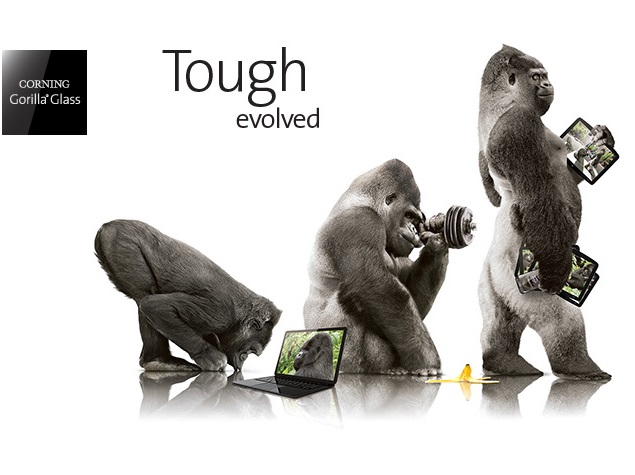- Home
- Mobiles
- Mobiles News
- Gorilla Glass cheaper and stronger than sapphire claims Corning executive
Gorilla Glass cheaper and stronger than sapphire claims Corning executive

Now Corning, the makers of the Gorilla Glass screen for devices such as smartphones and laptop screens among others, has given its two-cents about the demerits of sapphire for displays and how its offering is better, notes a CNET report.
Corning's senior vice president (SVP), Tony Tripeny, at the Morgan Stanley Technology, Media and Telecom Conference, answered a question related to sapphire versus glass, and claimed that there are some disadvantages sapphire displays have compared to Gorilla Glass. Tripeny said, "It's about 10 times more expensive. It's about 1.6 times heavier. It's environmentally unfriendly. It takes about 100 times more energy to generate a Sapphire crystal than it does glass."
Corning's SVP, also claimed that the sapphire material transmits less light through, which would mean that the device's display (if sapphire used) will look dimmer and the battery will not last for long.
Further, Tripeny suggested that while sapphire material is scratch resistant, it can still break, while the Gorilla Glass can take around 2.5 times more pressure than the sapphire.
He elaborated on why Gorilla Glass is the cheaper option, when compared to the sapphire material, adding, "The formation takes about 4,000 times longer than Gorilla Glass at a significantly higher melting temperature. Its hardness makes machining more difficult and costly. Then the cost per unit increases exponentially because when you have defects in boundaries in the crystal growth process, you essentially cut them out."
Notably, a recent granted patent by the USPTO detailed a cutting and processing method for sapphire material by Apple, which introduced a sapphire-based fingerprint sensor on its iPhone 5s.
The sapphire manufacturing patent, applied for back in July 2012, detailed the process of how the Cupertino firm would cut the sapphire material and polish it. The patent also included the use of lasers for cutting the material into Windows.
An earlier report suggested that GT Advanced Technologies (GTAT) received sapphire crystal display tool components, which are enough to manufacture between 100 and 200 million 5-inch iPhone displays.
Catch the latest from the Consumer Electronics Show on Gadgets 360, at our CES 2026 hub.
Related Stories
- Samsung Galaxy Unpacked 2025
- ChatGPT
- Redmi Note 14 Pro+
- iPhone 16
- Apple Vision Pro
- Oneplus 12
- OnePlus Nord CE 3 Lite 5G
- iPhone 13
- Xiaomi 14 Pro
- Oppo Find N3
- Tecno Spark Go (2023)
- Realme V30
- Best Phones Under 25000
- Samsung Galaxy S24 Series
- Cryptocurrency
- iQoo 12
- Samsung Galaxy S24 Ultra
- Giottus
- Samsung Galaxy Z Flip 5
- Apple 'Scary Fast'
- Housefull 5
- GoPro Hero 12 Black Review
- Invincible Season 2
- JioGlass
- HD Ready TV
- Laptop Under 50000
- Smartwatch Under 10000
- Latest Mobile Phones
- Compare Phones
- OPPO Reno 15 Pro Max
- Honor Win RT
- Honor Win
- Xiaomi 17 Ultra Leica Edition
- Xiaomi 17 Ultra
- Huawei Nova 15
- Huawei Nova 15 Pro
- Huawei Nova 15 Ultra
- Asus ProArt P16
- MacBook Pro 14-inch (M5, 2025)
- OPPO Pad Air 5
- Huawei MatePad 11.5 (2026)
- Xiaomi Watch 5
- Huawei Watch 10th Anniversary Edition
- Acerpure Nitro Z Series 100-inch QLED TV
- Samsung 43 Inch LED Ultra HD (4K) Smart TV (UA43UE81AFULXL)
- Asus ROG Ally
- Nintendo Switch Lite
- Haier 1.6 Ton 5 Star Inverter Split AC (HSU19G-MZAID5BN-INV)
- Haier 1.6 Ton 5 Star Inverter Split AC (HSU19G-MZAIM5BN-INV)

















